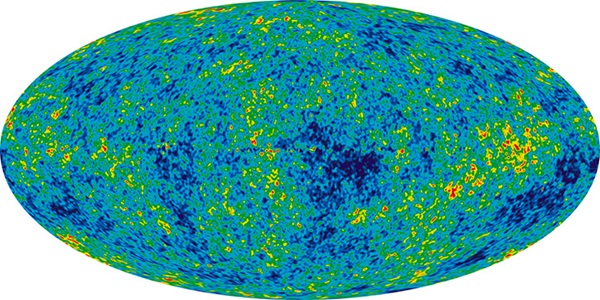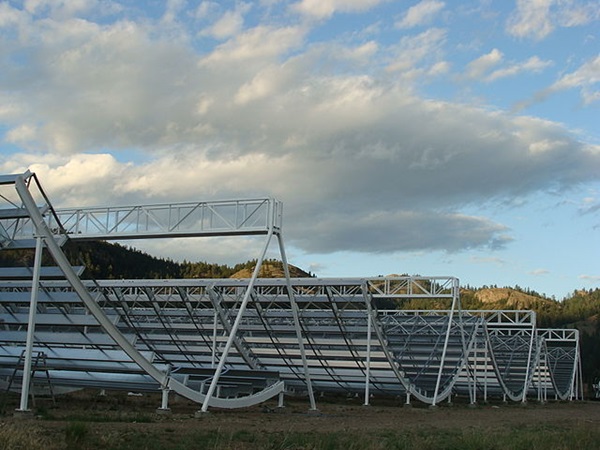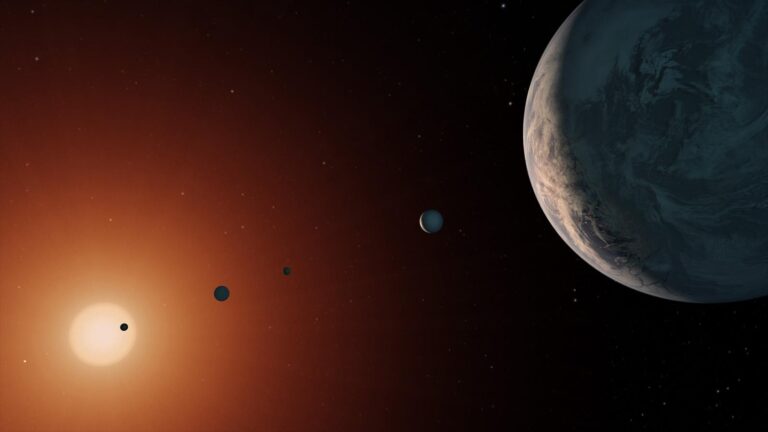That dream team of skilled scientists has stepped up to tackle some of the universe’s deepest questions. The “Centre for the Universe” project based out of Perimeter Institute in Waterloo, Canada, will study a range of concepts in physics and astronomy including dark matter, dark energy, black holes, and the Big Bang.
The team of scientists announced their project on November 20. The Centre for the Universe, led by Dr. Neil Turok, will utilize data from the most advanced telescopes, as well as propose and exploit completely new techniques to study the universe. With the guidance of these new experiments and by creating an environment in which better theories can be conjured, Turok aims to improve upon existing explanations of the cosmos.
Some current theories of the universe are becoming less plausible and are likely in need of a major shakeup. “What’s exciting to me is that the observations are pointing to some very simple phenomena, which are nevertheless profoundly paradoxical within our current conceptual frameworks,” Turok said.
Brains and Brawn
It’s not just the collaboration of skilled researchers and cutting-edge technology that make this project rather awe-inspiring. The technology that the Centre for the Universe will use to probe the mysteries of the universe is incredible in two ways.
Similarly, the software is quite unique. The Centre is also working with the Canadian Hydrogen Intensity Mapping Experiment (CHIME), which features software written from scratch, by cosmologists and for cosmologists. One of the most powerful supercomputers in Canada, which is run out of ordinary shipping containers with simple equipment developed by the cell phone industry, uses the software to survey radio signals one hundred times faster than any current or planned instrument. The software is capable of processing 13 terabits per second, comparable to the mobile data rate of every cell phone on Earth combined. Using incredibly simple and low-cost technology combined with revolutionarily powerful, specifically tailored software has set up researchers for groundbreaking discoveries.
The Dream Team
Neil Turok is among the world’s leading cosmologists with a body of work that cannot be listed with brevity. Some of his most notable work includes describing the birth of inflationary universes, conducted in part with Stephen Hawking, which later helped spark the idea of multiverses. Most recently, he has mathematically disproved a popular conjecture put forth by Hawking and others for how an inflationary universe might appear from nothing.
His current work focuses heavily on analyzing the physics of the very early universe, and how it can be studied through observations. Turok’s predictions about the correlation between the polarization and temperature of the cosmic background radiation have recently been confirmed, which has gotten us one step closer to understanding the birth of the universe.
Turok has assembled a team of high-powered researchers to work with him. There are already over 20 committed scientists with plans to expand. The Centre consists of professors at Perimeter Institute and nearby universities, and has just announced three new research fellowship positions named, with permission, in honor of Stephen Hawking, James Peebles, and Yakov Zel’dovich.
Among this team’s members are theoretical astrophysicist Ue-Li Pen and Perimeter faculty members William East and Kendrick Smith, the “top data analyst of cosmology worldwide,” according to Turok.
Pen, who is the Director of the Canadian Institute for Theoretical Astrophysics, is one of the founders of CHIME. He works primarily with pulsars and fast radio bursts (FRBs), the latter of which is a bit of a mystery. FRBs are very quick but powerful spikes of radio waves that generally don’t repeat, which makes them hard to detect and even harder to determine what causes them. Pen aims to resolve some of these issues.
“I am in the camp of people who think these two phenomena [pulsars and FRBs] are related,” Pen said. “Fast radio bursts are distant flares that allow us to probe a million times more distant than pulsars. Pulsars have resulted in two Nobel prizes, so surely this new phenomenon has a lot of potential.”
“The ultimate goal is to completely understand dynamical space-time,” East said. “I think in the next few years a lot of this work is going to be guided by the gravitational wave observations.”
Cosmology data analyst Kendrick Smith brings yet another interesting element to the team. With a Ph.D. in both physics and mathematics, he provides an incredibly powerful and unique combination of expertise to the project. His research focuses on studying the cosmic microwave background left behind by the Big Bang, and he has also recently joined the CHIME and HIRAX projects. His expertise in data analysis is allowing the Centre for the Universe to make important contributions in interpreting the information gathered by the CHIME experiment. The software he will be using is expected to make a major leap in our knowledge of fast radio bursts by detecting many more of these events.
“Only 25 FRBs have been found since their initial discovery in 2007, but CHIME is so powerful that it should find around 10 per day! We hope that this huge increase in statistics will solve the mystery of what causes fast radio bursts,” Smith said.
Solving The Universe’s Deepest Mysteries
When asked what he would personally like to see accomplished through the Centre for the Universe, Turok did not miss a beat.
“I want to understand the Big Bang,” he said.
The beginning of the universe involved the laws of physics taken to their absolute extreme. Physicists know that both gravity and quantum mechanics were involved, but these two theories famously disagree with each other. This is a fairly major problem in theoretical physics, which is exciting to researchers. Advancements have been made in both theories since their conception, and Turok believes it is time for a new comprehensive theory to marry the two.
“What’s most exciting to me is that this new way of studying gravity in combination with quantum mechanics is pointing us to new and better ways to describing the Big Bang itself,” he said. “My sense is that the whole field is ready for major advances.”
The Centre for the Universe expects to work with CHIME, HIRAX, SKA and other telescopes to study gaps in our knowledge of dark energy and dark matter as well.
“These phenomena are probably clues toward new laws of physics, but we don’t yet understand them in enough detail to elucidate their fundamental nature,” Smith said. “There are many fronts where we can hope to make progress: new experiments to take more precise measurements, new statistical and computing techniques, and new insight from theoretical physics.”
Black hole enthusiasts can expect to hear from the Centre for the Universe in May 2018 following a conference on “black hole superradiance.” Theoretical calculations predict that through this effect, we might be able to find a completely new particle around the horizons of black holes called axions. One of the pioneers of this approach is another young member of Perimeter’s faculty, Asimina Arvanitaki. She is a physicist renowned for her creative style of dreaming up novel experiments, opening the door to new ways of detecting previously invisible types of dark matter particles.
Interesting work has already begun at the Centre for the Universe, and we’ll see a great deal more as new technologies become available. The magnitude of potential is truly astonishing, and spirits are high for the hope of ushering in a new era of astrophysics.
“People have said quite recently that anything doable has basically been done already, and that there’s nothing much else we’ll ever understand. We are excited about the prospects of proving them to be so, so very wrong,” Turok said.












